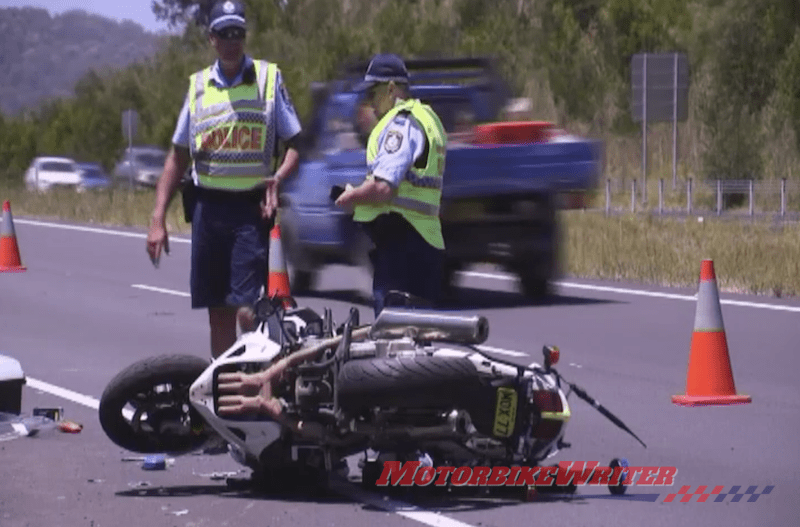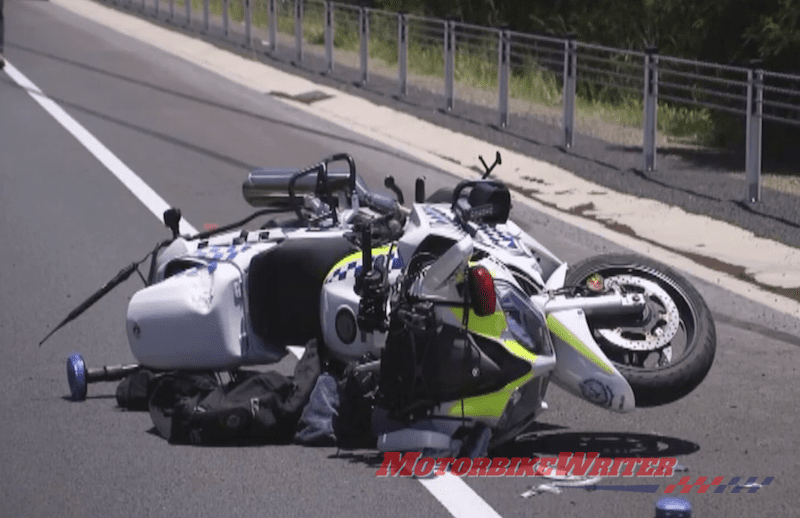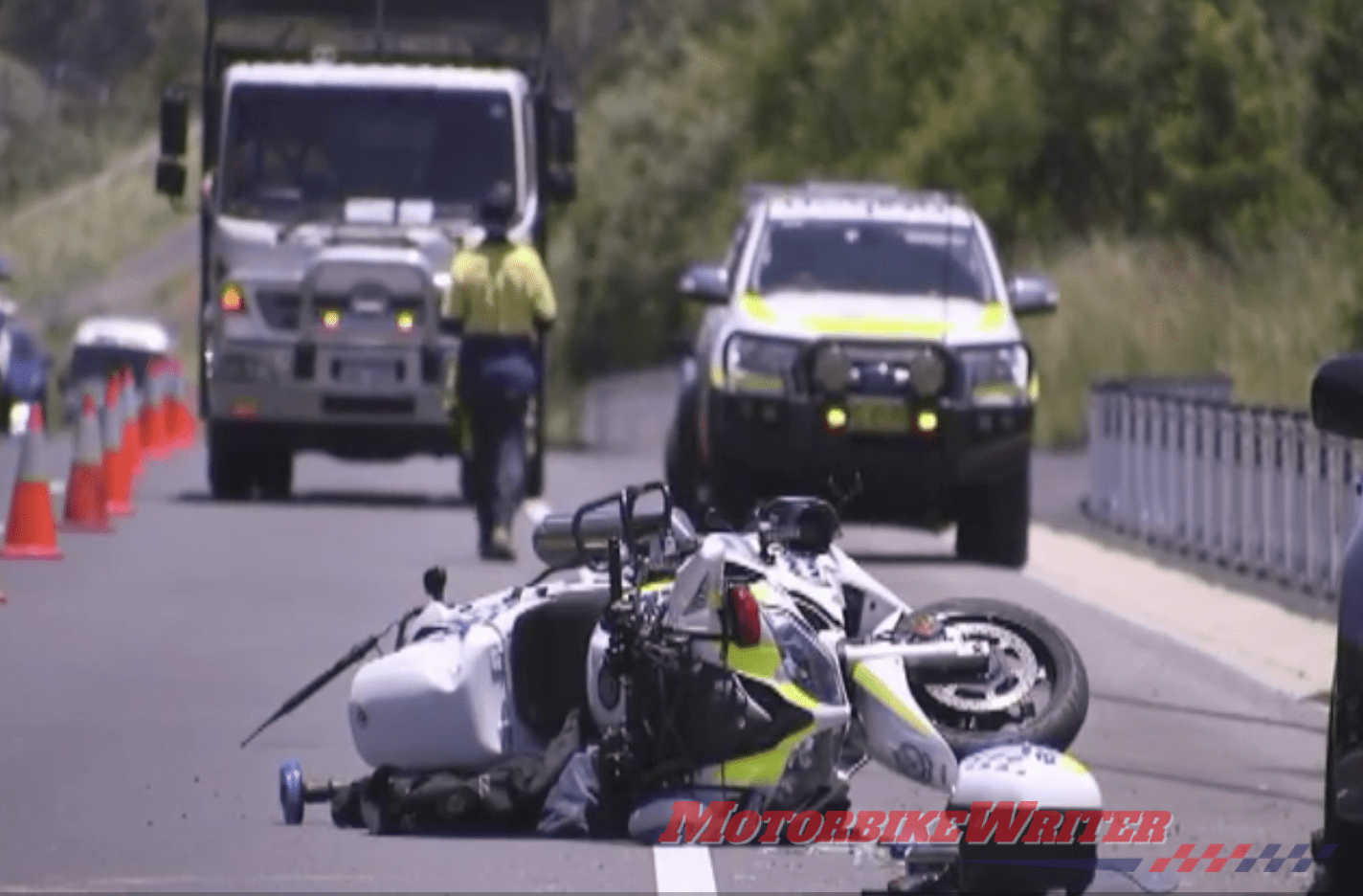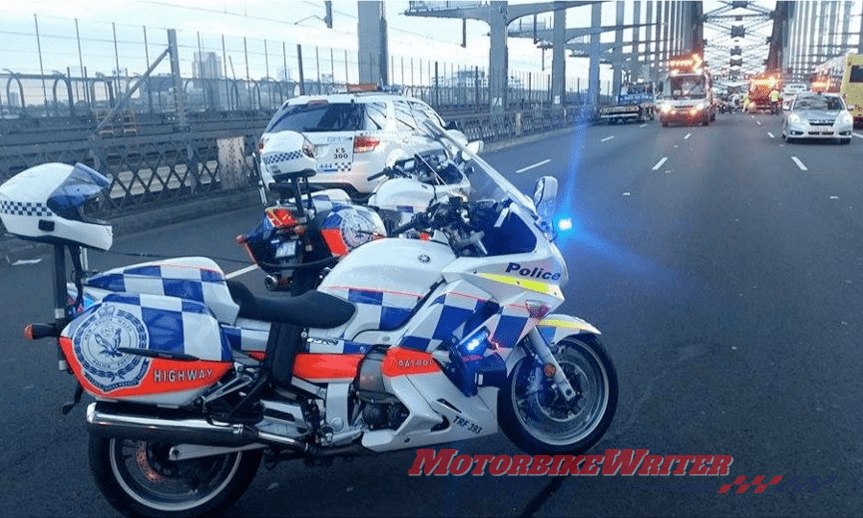A recent crash that injured a NSW police motorcyclist happened despite a new rule requiring motorists to slow to 40km/h when passing stationary or slow-moving emergency vehicles.
The incident occurred at Warrell Creek near Nambucca Heads, NSW, last Sunday when the officer pulled over a car and was hit by another car.
Motorcycle Council of NSW Chairman Steve Pearce says it’s “just a matter of time until a serious incident occurs as a result of this rule”.
“The fact is our motorways were never constructed with emergency management considered adequately,” he says.
“Asking drivers to reduce speed from 110km/h to 40km/h without adequate warning is just a recipe for a disaster.
“In my view, the NSW Government have opened themselves to a possible damages action. A driver/rider should expect to be given adequate warning to reduce speed from 110km to 40km. The legislation as it stands does not allow for any adequate or reasonable warning structure whatsoever.”
Minister for Roads, Maritime and Freight Melinda Pavey says the new rule which matches rules in Victoria and Western Australia is under a 12-month review and she is awaiting a police report on the incident. South Australia has a similar rule but a 25km/h speed.
The RACV says it could be difficult for motorists to see flashing emergency vehicles’ lights over a hill and have enough time to slow down to 40km/h.
The Queensland Government has rejected Police Union calls for a similar road rule.
The major concern is that vulnerable motorcyclists, such as the NSW police officer, are at risk.
In fact, the person the rule was meant to protect appears to be a victim in this incident.
NSW Police say the 48-year-old officer has undergone surgery for fractures to his right leg.
A 70-year-old woman from Queensland, the driver of the Mazda2, has been interviewed by police and released pending further investigation, spokesperson says.
“The matter is currently being investigated by the Crash Investigation Unit and it is too early to speculate on the associated factors,” she says.
Tips on emergency rule
If riders see the flashing lights of an emergency vehicle, there are several things they can do to avoid a rear-ender.
- Look at traffic behind you to assess the danger;
- Indicate and change lanes away from the emergency vehicle, if there is a vacant lane to move into;
- If not, switch on the hazard lights;
- Brake as smoothly as possible, perhaps activating the brake light on and off to attract the attention of following traffic; and
- Search for an escape route, possibly between lanes or on the road edge.
Confusing rule
The rule is confusing for motorists travelling interstate during holidays because of the disparities in the rule and the fact that some states do not have the rule at all.
Emergency vehicles are defined as police cars, fire engines and ambulances displaying red and blue flashing lights and/or sounding their siren.
In Victoria it includes all “escort vehicles”. In SA SES vehicles are included and in WA it extends to all emergency vehicles, including tow trucks, RAC roadside assistance patrol vehicles, and Main Roads Incident Response Vehicles removing road debris and broken-down vehicles.
The rule does not apply if the emergency vehicle is on the other side of the road where there is a median strip.
Fines also vary
In South Australia, you can cop a maximum fine up to $1007 and some motorists have been disqualified for six months.
Victoria’s fine is $272.05, but there is a maximum court penalty of $777.30 if you unsuccessfully challenge the fine.
In NSW, the fine is $448 and three demerit points while in WA it is $300 and three points.
The new road rule will be trialled in NSW until August 31, 2019, before all authorities concerned decide whether to make the law permanent.





